
The 1944 United States presidential election was the 40th quadrennial presidential election. It was held on Tuesday, November 7, 1944. The election took place during World War II, which ended the following year. Incumbent Democratic President Franklin D. Roosevelt defeated Republican Thomas E. Dewey to win an unprecedented fourth term. It was also the fifth presidential election in which both major party candidates were registered in the same home state; the others have been in 1860, 1904, 1920, 1940, and 2016. This was the last election until 1996 that saw the reelection of an incumbent Democratic president.

The 1952 United States presidential election was the 42nd quadrennial presidential election and was held on Tuesday, November 4, 1952. Republican Dwight D. Eisenhower won a landslide victory over Democrat Adlai Stevenson II, becoming the first Republican president in 20 years. This was the first election since 1928 without an incumbent president on the ballot.
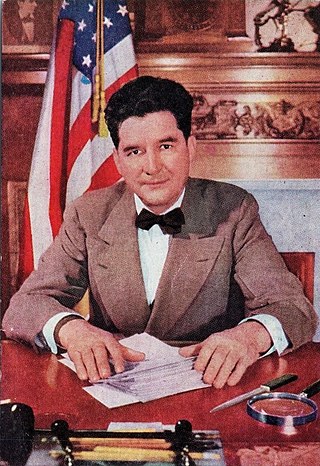
Frank John Lausche was an American Democratic politician from Ohio. He served as the 47th mayor of Cleveland and the 55th and 57th governor of Ohio, and also served as a United States Senator from Ohio for two terms (1957–1969).

Stephen Marvin Young was an American politician from the U.S. state of Ohio. A member of the Democratic Party, he served as a United States senator from Ohio from 1959 until 1971.
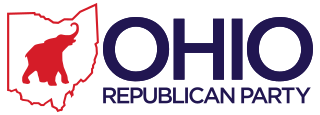
The Ohio Republican Party is the Ohio affiliate of the Republican Party. It was founded in Columbus, Ohio, in 1854. It is currently the state's favored party, controlling the majority of Ohio's U.S. House seats, one of its two U.S. Senate seats, the governorship, and has supermajorities in both houses of the state legislature.

The 1996 United States Senate elections were held on November 5, with the 33 seats of Class 2 contested in regular elections. Special elections were also held to fill vacancies. They coincided with the presidential election of the same year, in which Democrat Bill Clinton was re-elected president.

The 1986 United States Senate elections were elections for the United States Senate. Held on November 4, in the middle of Ronald Reagan's second presidential term, the 34 seats of Class 3 were contested in regular elections. The Republicans had to defend an unusually large number of freshman Senate incumbents who had been elected on President Ronald Reagan's coattails in 1980. Democrats won a net of eight seats, defeating seven freshman incumbents, picking up two Republican-held open seats, and regaining control of the Senate for the first time since January 1981. This remains the most recent midterm election cycle in which the sitting president's party suffered net losses while still flipping a Senate seat.

The 1984 United States Senate elections were held on November 6, with the 33 seats of Class 2 contested in regular elections. They coincided with the landslide re-election of President Ronald Reagan in the presidential election. In spite of the lopsided presidential race, Reagan's Republican Party suffered a net loss of two Senate seats to the Democrats, although it retained control of the Senate with a reduced 53–47 majority. Democrats defeated incumbents in Illinois and Iowa, and won an open seat in Tennessee, while Republicans defeated an incumbent in Kentucky.

The 1980 United States Senate elections were held on November 4, coinciding with Ronald Reagan's victory in the presidential election. The 34 Senate seats of Class 3 were contested in regular elections. Reagan's large margin of victory over incumbent Jimmy Carter gave a huge boost to Republican Senate candidates, allowing them to flip 12 Democratic seats and win control of the chamber for the first time since the end of the 83rd Congress in January 1955.

The 1976 United States Senate elections was an election for the United States Senate. Held on November 2, the 33 seats of Class 1 were contested in regular elections. They coincided with Democrat Jimmy Carter's presidential election and the United States Bicentennial celebration. Although almost half of the seats decided in this election changed parties, Carter's narrow victory did not provide coattails for the Democratic Party. Each party flipped seven Senate seats, although, one of the seats flipped by Democrats was previously held by a Conservative.

The 1970 United States Senate elections was an election for the United States Senate. It took place on November 3, with the 33 seats of Class 1 contested in regular elections. Special elections were also held to fill vacancies. These races occurred in the middle of Richard Nixon's first term as president. The Democrats lost a net of three seats, while the Republicans and the Conservative Party of New York picked up one net seat each, and former Democrat Harry F. Byrd Jr. was re-elected as an independent.

The 1952 Republican National Convention was held at the International Amphitheatre in Chicago, Illinois from July 7 to 11, 1952, and nominated the popular general and war hero Dwight D. Eisenhower of New York, nicknamed "Ike", for president and the anti-communist crusading Senator from California, Richard M. Nixon, for vice president.
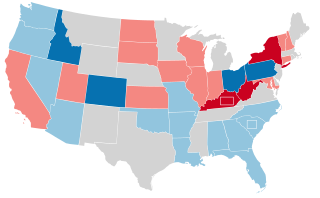
The 1956 United States Senate elections were elections for the United States Senate that coincided with the re-election of President Dwight D. Eisenhower. The 32 seats of Class 3 were contested in regular elections, and three special elections were held to fill vacancies. Although Democrats gained two seats in regular elections, the Republicans gained two seats in special elections, leaving the party balance of the chamber unchanged.

The 1948 United States elections were held on November 2, 1948. The election took place during the beginning stages of the Cold War. Democratic incumbent President Harry S. Truman was elected to a full term in an upset, defeating Republican nominee New York Governor Thomas E. Dewey and two erstwhile Democrats. The Democrats won back control of Congress from the Republicans. Until 2020, Democrats would never again flip a chamber of Congress in a presidential election cycle.

The 1952 United States elections were held on November 4, 1952, during the Cold War and the Korean War. General of the Army Dwight D. Eisenhower won the White House in a landslide over Democratic Governor Adlai Stevenson of Illinois. Meanwhile, Republicans narrowly took control of both chambers of Congress, giving Republicans their first trifecta since the Great Depression. This is the last election until 2000 in which the Republicans held both chambers of Congress and the presidency at the same time. For the rest of the century, Republicans would often still win the presidency without full control of Congress.
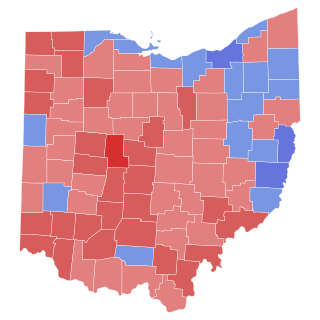
The 1968 United States Senate election in Ohio took place on November 5, 1968. Incumbent Senator Frank Lausche ran for re-election to a third term, but lost the Democratic primary to former U.S. Representative John J. Gilligan. Before losing the primary to the more solidly liberal Gilligan, Lausche had one of the most conservative voting record among Senate Democrats, leaving the Democratic Party very disappointed. In the general election, Gilligan lost to Republican Ohio Attorney General William Saxbe in a close race. Saxbe's victory increased the number of Senate Republicans in the 91st Congress. He would serve 5 years in the Senate before being nominated by President Richard Nixon to be U.S Attorney General, he resigned the seat after being confirmed. Gilligan, who in January 1974 was serving as the Governor of Ohio, named Saxbe's successor.

The 1938 United States Senate election in Ohio took place on November 7, 1938. Incumbent Senator Robert J. Bulkley ran for re-election to a second full term in office, but was defeated by the Republican nominee, former state Senator Robert A. Taft, the elder son of former President and supreme court chief justice William Howard Taft. Taft's victory was a part of a major Republican wave nationally, where Republicans gained 8 Senate seats and 81 seats in the House of Representatives, which was largely attributable to incumbent Democratic President Franklin Roosevelts's unpopularity in the aftermath of the Recession of 1937–1938 and the President's controversial plan to add more seats to the Supreme Court, which he proposed after the court ruled some of his New Deal programs unconstitutional. Taft's victory marked the beginning of 4 consecutive Republican victories in this seat, and Democrats would not win it again until Governor Frank Lausche won it in 1956.
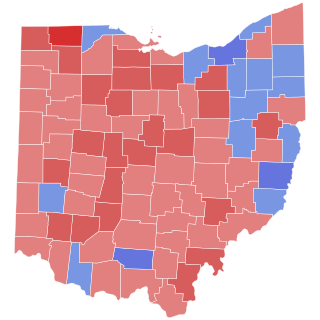
The United States Senate special election in Ohio of 1954 was held on November 2, 1954 to complete the unexpired term of late Senator Robert A. Taft, who died in office on July 31, 1953. Interim Senator Thomas A. Burke ran to complete the term in office but was narrowly defeated by U.S. Representative George Bender.
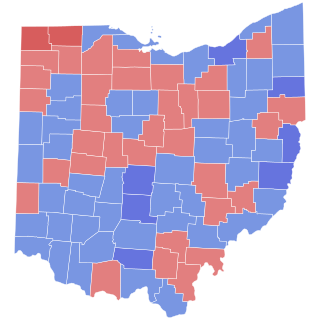
The 1952 Ohio gubernatorial election was held on November 4, 1952. Incumbent Democrat Frank Lausche defeated Republican nominee Charles Phelps Taft II with 55.90% of the vote.





















